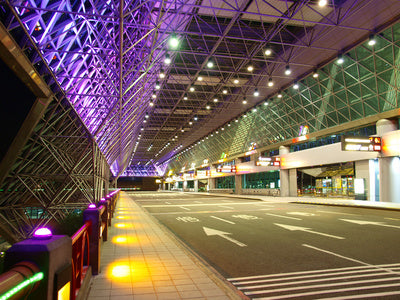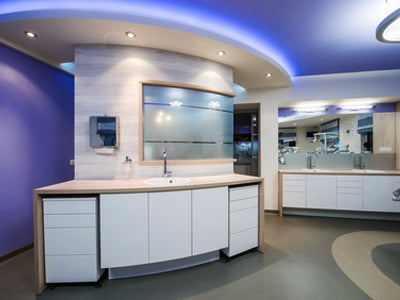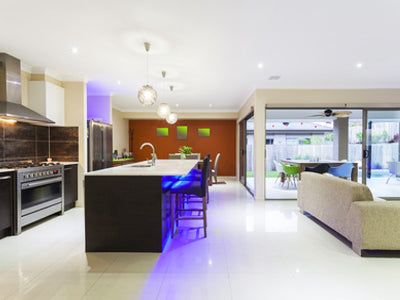FAQ
LED
The light-emitting diode (LED) is one of today's most energy efficient and rapidly developing lighting technologies. LED is a type of solid-state lighting that uses a semiconductor to convert electricity into light.
Industrial and Commercial Lighting
Kitchen Under-Cabinet lighting, closet
Because LEDs are small and directional, they are ideal for lighting counter tops, closets and so much more. The color can change to blue, red or Green.
LED Strip Lights
Recessed down lights
Recessed down lights are commonly used in residential kitchens, hallways, bathrooms, and in a number of office and commercial settings.
Recessed down lights
How long do LEDs last?
Many LEDs last for up to 50,000 hours. This is approximately 50 times longer than a typical incandescent, 20-25 times longer than a typical halogen, and 8-10 times longer than a typical CFL. When used 12 hours per day, a 50,000hr bulb will last more than 11 years.
What are the advantages of switching to LED?
There are numerous advantages to switching to LED. Some of those benefits include the fact that LEDs use much less electricity than other bulbs, have extremely long rated lives, produce very little heat, do not emit UV or infrared, contain no mercury, are resistant to shock and vibration, and can operate effectively in extremely cold environments.
Where can LED bulbs be used?
LED lights can be used about anywhere you could think of. LED replacements are already currently available for bulb types like:
A-shapes, PAR reflectors, MR reflectors, decorative, under cabinet, & etc.
When using on dimmers, particularly dimming systems that support multiple bulbs, be sure to test a few LEDs out for yourself first, to check compatibility.
Is a LED product going to produce enough light to replace my current bulb?
For most applications, yes. Off the shelf LED products are now reliably replacing incandescent equivalents of up to 100 watts, and specialty products are available to replace even higher wattages.
How green are LEDs?
LEDs are very green. For starters, they use much less electricity than many other lighting products. This means that less electricity has to be produced to operate them, and resulting in lower emissions from power plants, especially in areas where coal-fired plants are common. Unlike CFLs, they contain no mercury. Because of their long life, they also reduce solid waste: if you replace an incandescent bulb with an LED, you will prevent fifty 1,000 hour incandescent bulbs from being thrown away. Additionally, they produce very little heat and can reduce energy usage related to HVAC. The U.S. Department of Energy has estimated that increased adoption of LEDs over the next 15 years would also reduce electricity demands from lighting by 62 percent, prevent 258 million metric tons of carbon emissions, and eliminate the need for 133 new power plants.
Do LED’s contain hazardous or heavy metals, such as Mercury?
No, LED lights do not contain any amount of mercury or any other hazardous metals & chemicals. Only in the instance of CFL's and fluorescents, is when a very small amount of mercury appears, which requires correct disposal, so when your LED bulb eventually stops working, there will be no need worry about costly or elaborate disposal procedures.
What is the main difference between a $20 LED lights & $80 LED’s?
It's always best to buy from a manufacturer or retailer that you're confident will stand behind the product. LED lighting is very much like consumer electronics, & quality matters here. For your LED to operate properly and supply an acceptable light output, all other factors must be built to last.
How can I choose high quality LED lights’ color?
In order to recognize good quality to bad, a Color Rendering Index (CRI) is generally used to measure light quality on a scale from 1-100. Most LEDs have a CRI rating of at least 80, and many more are 90+.
What is a color rendering index & LED light bulb?
LED bulbs have grown in popularity recently, mainly due to their energy-efficient qualities and bright light production. In terms of CRI for LED, most LED lights produce a score of about 80 to 90 on the chart. The result is a brighter room, but with a much more natural, accurate output of light. Unlike fluorescent lighting which can create an unnatural look, LEDs are better suited to indoor environments. Aside from the color rendering index, the number of lumens output, or actual light produced, plays a role in the overall effectiveness of an LED bulb too.
Can LEDs be used with dimmers?
Usually, yes. Contact BrightNEX LED for more information on whether the product you choose is dimmable.
Are there rebates/incentives/tax credits for switching to LED?
In many cases, yes. In order to find out if you are eligible for a rebate or other incentive program, call us
Tel: (800) 882-6204
